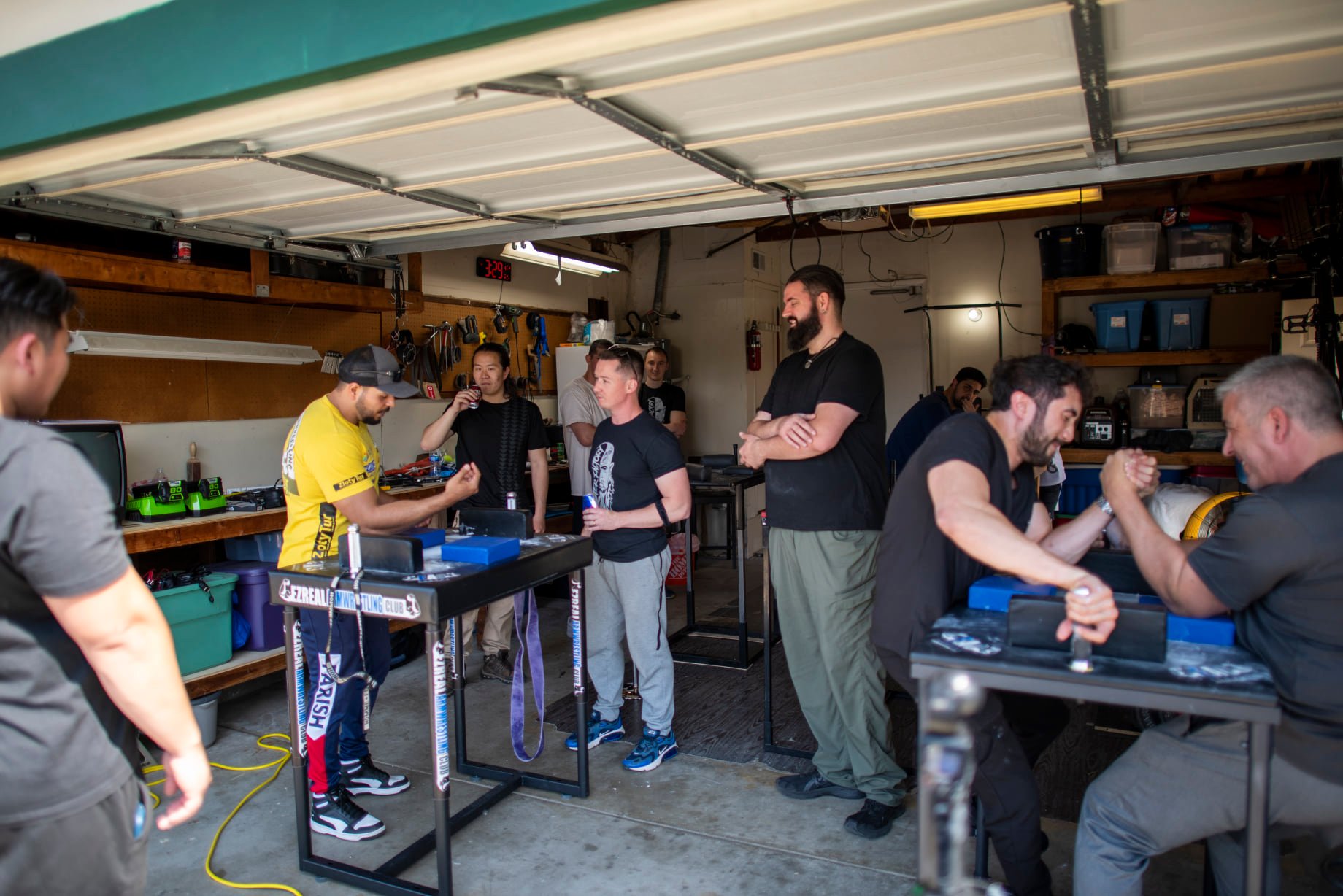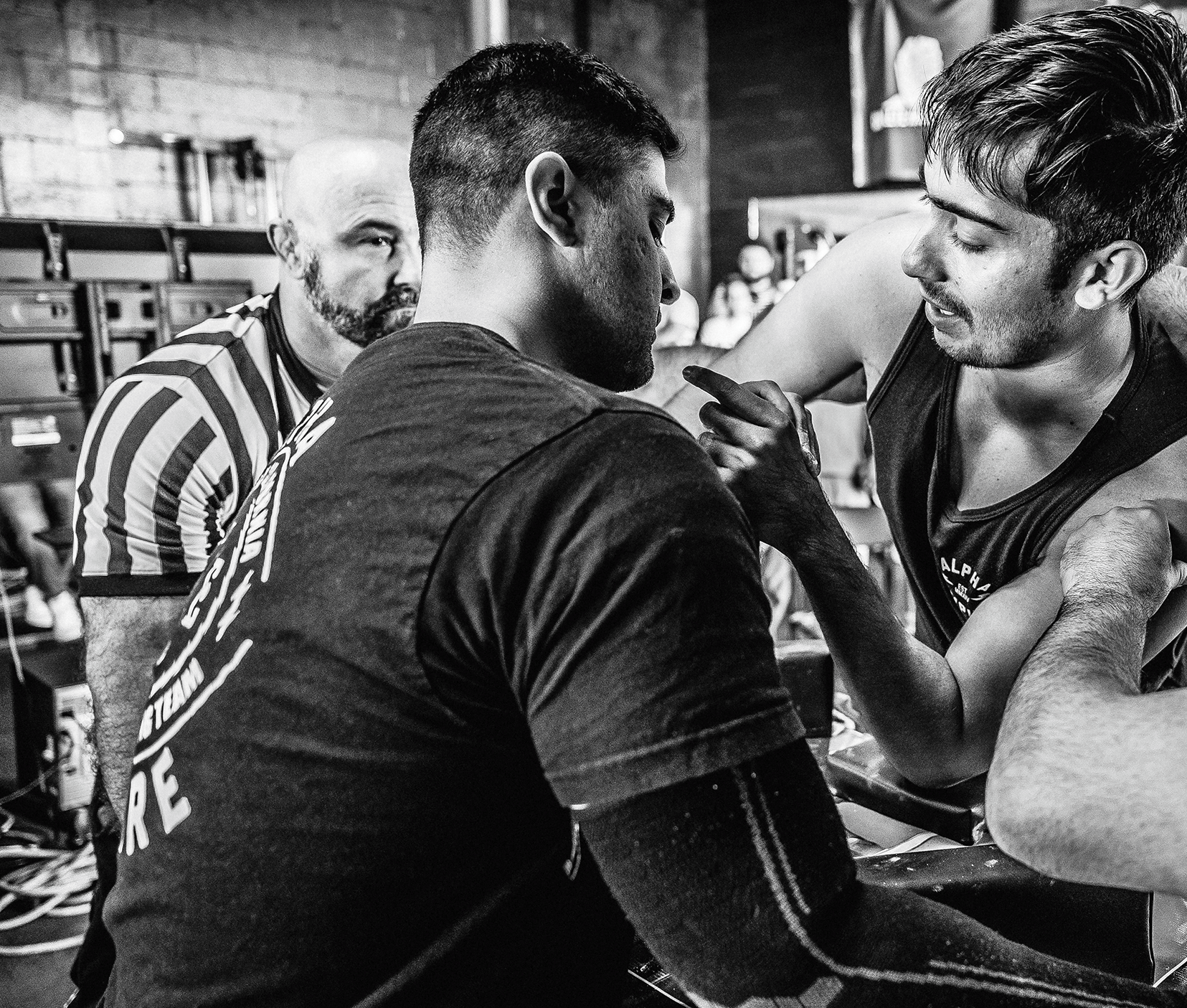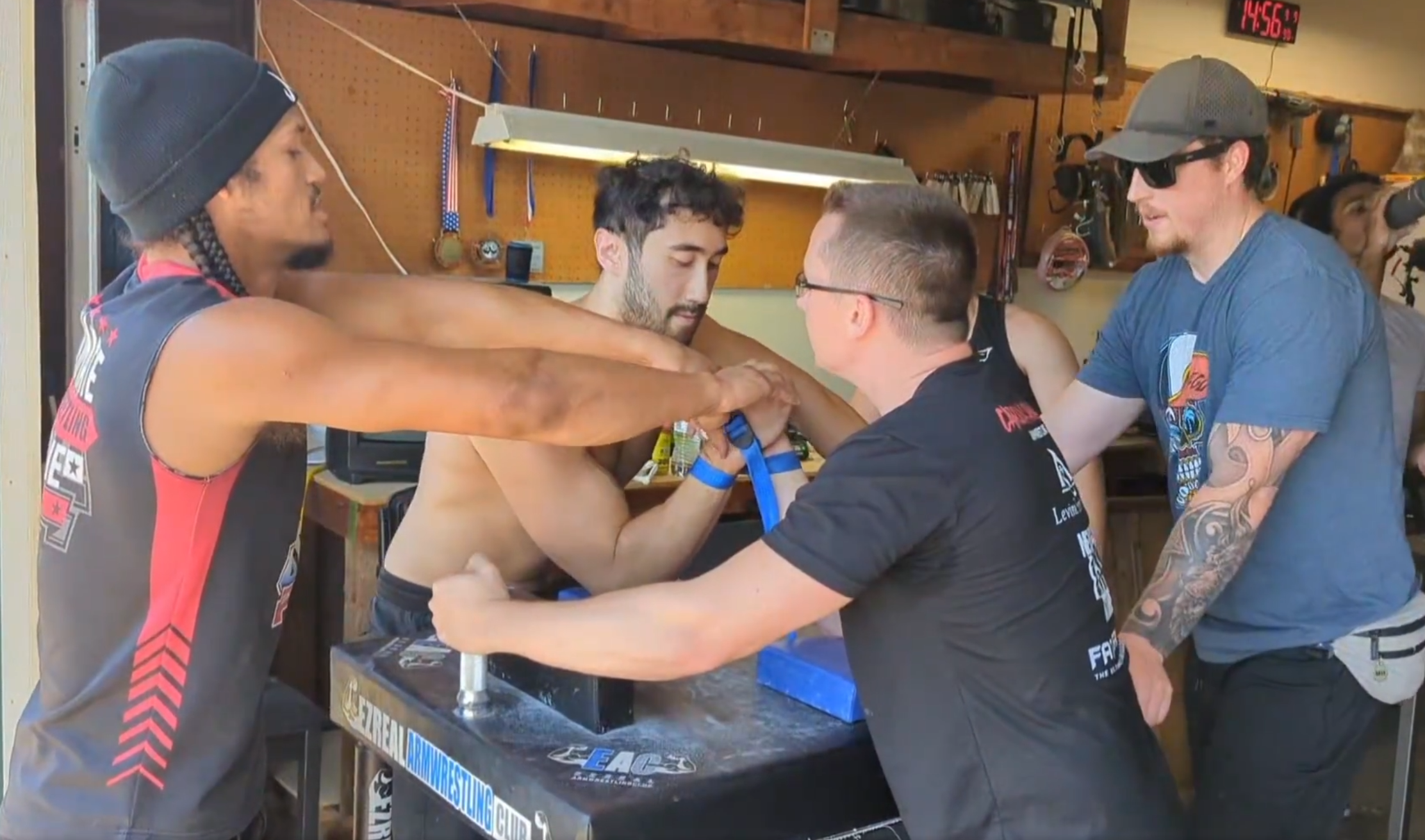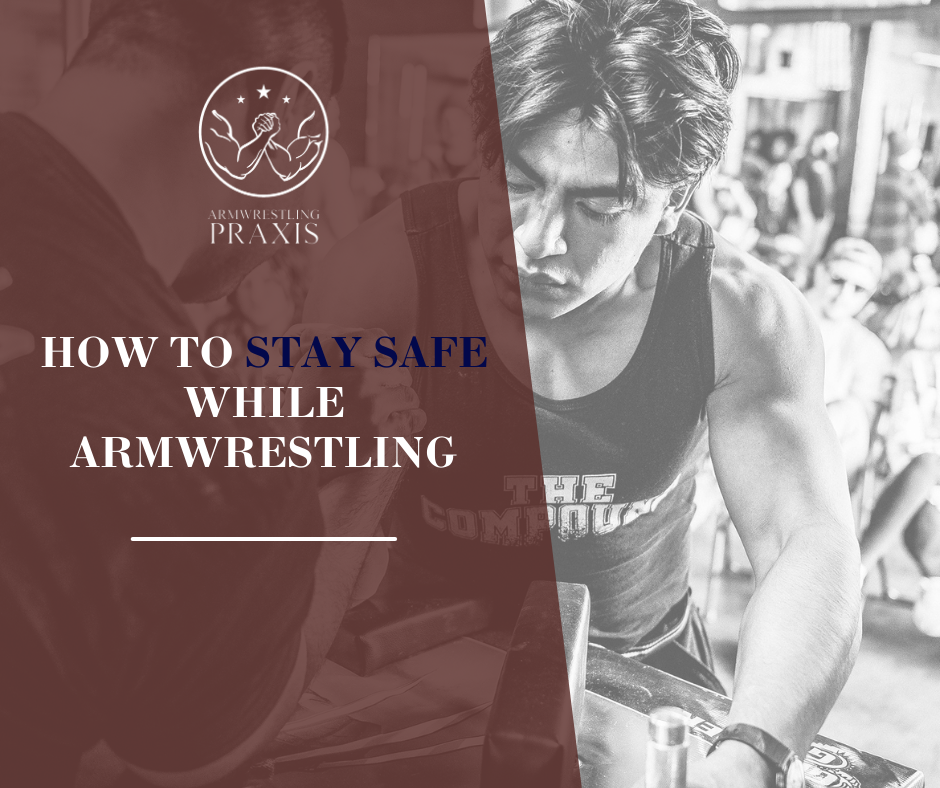Your first year in a new hobby, project, or venture is one of the most memorable and unique parts of the journey.
It’s the time when you experiment with different ideas, surround yourself with more experienced participants, and learn the basics of whatever it is you’re doing.
 Photo taken from a Bay Area Armwrestling practice video by Matt Silva
Photo taken from a Bay Area Armwrestling practice video by Matt Silva
There is a tendency, however, during these early stages to spread ourselves thin by attempting to do much at once – only later realizing that we should have focused on implementing and mastering a few basic habits first before hastily trying to move ahead.
These habits are the foundation for longevity and continual progression in the sport of armwrestling so it’ll be worth our time to explore them in a bit more detail.
With that in mind, this article will highlight the top 3 things that beginners should focus on from the day they attend their very first armwrestling practice through the next 365 days and beyond.
1. Consistent Table-Time is King
The most important fundamental that beginners must learn is how to effectively move their body on an armwrestling table. Nothing else supersedes this during your first year in the sport.
This is accomplished by frequently attending armwrestling practices where you learn the basics of safety and technique with other armwrestlers of varying size, shape, and experience level - this is referred to as “table time”.
Not only does frequent table-time help you learn the specific skill that is the sport of armwrestling, it also conditions the necessary joints and tendons required to produce force in an armwrestling match.
AND, unsurprisingly, table-time happens to be the best part about armwrestling - actually getting to armwrestle!
None of these benefits are obtained if you aren’t consistently doing table-time so hopefully you’ve found a club that you can practice with regularly. If you haven’t, you can check out this article on how to find one in your region.
As far as actual frequency is concerned, most experienced armwrestlers will advise beginners to attend 1 table-time session/week so that they can get adequate rest between sessions.
2. Post-Practice Recovery & Rehab
Speaking of rest, newbies learn very quickly during the days that follow a table-time session that their tendons/muscles need ample time to recover before they’re back at 100%.
To speed up the recovery process, we want to perform high-rep movements with light resistance throughout the week to ensure our body is adequately healed by the next table session.
I will cover the details of various rehab/recovery methods in a different article, but for now I’ll just direct you to this grainy vintage video from pro armwrestler Devon Larratt which covers some basic rehab movements that you can perform with household items.

One key point to note about this method of recovery is that we are focusing on performing armwrestling-specific motions targeting the hand, wrist, and elbow instead of more general movements and exercises.
The reason for this is that armwrestling is a hand/wrist dominant sport and these specific movements will not only direct blood towards the inflamed areas (which facilitates recovery), but will also build a neurological connection with the hand & wrist so that you can more naturally engage them while armwrestling.
3. Compete!!
As soon as you have learned the basics of staying safe on the table and have been practicing long enough to have some working knowledge of various techniques (which you should if you have been attending table-time sessions regularly), find a local tournament and enter as many weight classes as you can (Both Right and Left Arms).
 Photo by Jackson Ruckar
Photo by Jackson Ruckar
When you’re a new armwrestler, the point of these tournaments is not to obtain a specific win/loss outcome, but to gain actual experience armwrestling another human being in a unique, competitive environment.
These environments cannot be replicated during normal table-time sessions, and there is a vast amount of knowledge that you’ll take away from your first few competitions that cannot be obtained ANYWHERE ELSE.
If you compete regularly and early in tournaments, you will, no doubt, be on the path of armwrestling greatness regardless of the outcome of the matches in those tournaments.
Build the Base First
Incorporating and staying consistent with these three habits will build a robust base upon which so much of the fascinating aspects of armwrestling can be explored and constructed on.
One of the most compelling things about the sport is that it requires us to become lifelong students, and we soon realize that we could spend decades learning and implementing all of its secrets and then still be left wondering if there’s more to glean.
This is one of the many reasons why the top pros are still as enthusiastic about it as when they first started.
But before we can start digging into the details and reap the benefits therein, we must focus our efforts and direct our energy towards building a strong foundation.
Keep up with these 3 habits and you’ll be well on your way to doing so.




